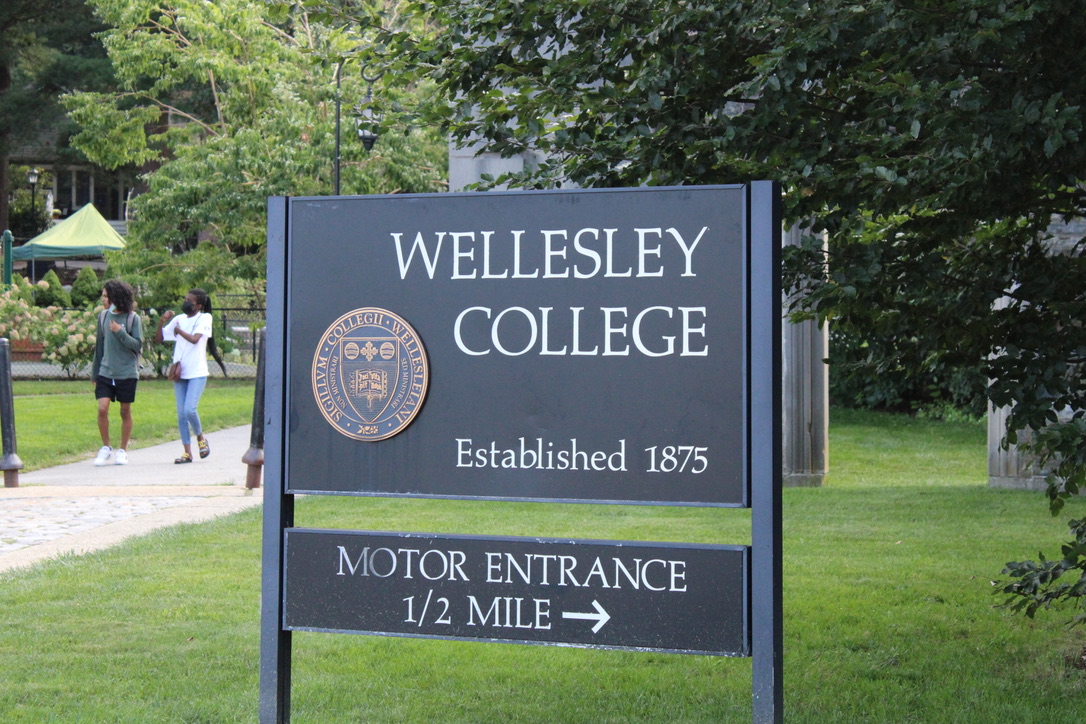By GRACE BENNETT-PIERRE ’16
Contributing Writer

by Hannah Degner ’15 Photography Editor
A ranking released by the Journal of Blacks in Higher Education (JBHE) late last year listed Wellesley as the high-ranking college with the smallest gap between white and black graduation rates. Specifically, the graduation rate for black students who entered Wellesley in 2007 is 92 percent, while the graduation rate for white students entering at the same time is only 89 percent.
According to Wellesley’s Office of Institutional Research, the graduation rate of black students has been two to five percent higher than that of white students for the past three six-year graduation cycles. Of the students who started at Wellesley in 2006, 94 percent of black students graduated within six years, as did 95 percent of Asian students, 95 percent of Hispanic students and 91 percent of white students.
Although other colleges and universities have higher overall graduation rates for black students—Harvard boasts an impressive black graduation rate of 97 percent—Wellesley and four other colleges graduate a higher percentage of black students than they do white students.
Bryn Mawr and Mount Holyoke, also women’s colleges, are among those five schools with the highest graduation rates for black students relative to the graduation rate for white students.
Patrice Caldwell, president of Ethos, said that the amount of support available at women’s colleges, particularly from alumnae, is part of the reason why many women’s colleges have strong black graduation rates.
“Wellesley is this phenomenal school where you have women looking up to women, using ‘women’ loosely, because I know many students don’t identify as women,” Caldwell said. “It’s the fact that you have people who just believe you can do these amazing things, regardless of your race or any of that.”
In general, Caldwell said Wellesley provides many layers of support for black students.
“Wellesley just has a different atmosphere,” she said.
Caldwell also noted that Wellesley offers a variety of cultural organizations and support networks for black students, such as Harambee House, Ethos, the Wellesley African Students Association, Women for Caribbean Development and the Black Women’s Ministry.
Though the JBHE ranking only includes “high ranking colleges and universities,” how these schools were determined to be high ranking was not specified. As a result, small liberal arts schools like Wellesley are compared with much larger universities, such as the University of California at Los Angeles and the University of North Carolina at Chapel Hill.
Director of Harambee House Tracey Cameron asserts that there are numerous factors that influence the high graduation rates at Wellesley and emphasizes that these factors affect students from all backgrounds.
“At Wellesley it’s really hard for you to get lost. You have a thousand different support systems,” Cameron said. “It could be that we are a smaller school, it could be the fact that there is more faculty support, there are other types of support networks, there is a Harambee House.”
Cameron cautions against using graduation rates alone as a metric of Wellesley’s success in making black students feel welcome on campus.
“Student success must be applied in a more holistic manner that focuses on the academic, personal, emotional, and spiritual development of students of African descent. The reality is that institutional climate can serve as a barrier to the latter three spheres of development, resulting in feelings of alienation, isolation and inadequacy,” Cameron said.
She suggested that the surveys and interviews conducted on an individual basis by the Office of Institutional Research may provide a more comprehensive view of the black experience at Wellesley and that it is crucial to consider graduation rates within a larger context of diversity.





